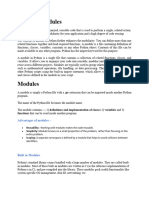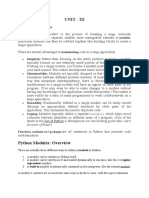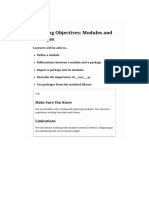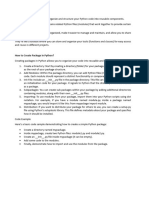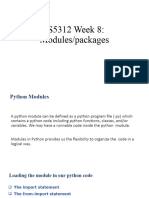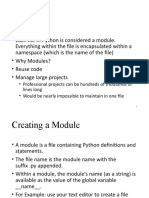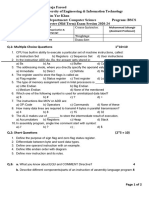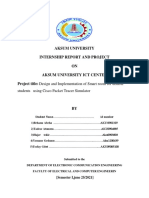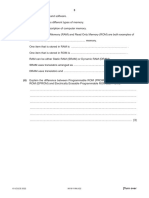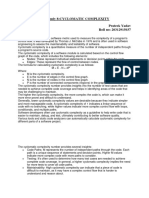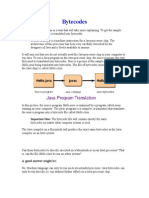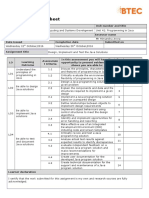0% found this document useful (0 votes)
10 views4 pagesModule and Packages
Modules in Python are single .py files containing reusable code, while packages are directories that contain multiple modules and an __init__.py file. Modules are imported using the import statement, whereas packages allow for hierarchical structuring of modules. Both are essential for organizing and maintaining Python code efficiently.
Uploaded by
pmcengg2024aids.020Copyright
© © All Rights Reserved
We take content rights seriously. If you suspect this is your content, claim it here.
Available Formats
Download as PDF, TXT or read online on Scribd
0% found this document useful (0 votes)
10 views4 pagesModule and Packages
Modules in Python are single .py files containing reusable code, while packages are directories that contain multiple modules and an __init__.py file. Modules are imported using the import statement, whereas packages allow for hierarchical structuring of modules. Both are essential for organizing and maintaining Python code efficiently.
Uploaded by
pmcengg2024aids.020Copyright
© © All Rights Reserved
We take content rights seriously. If you suspect this is your content, claim it here.
Available Formats
Download as PDF, TXT or read online on Scribd
/ 4









